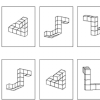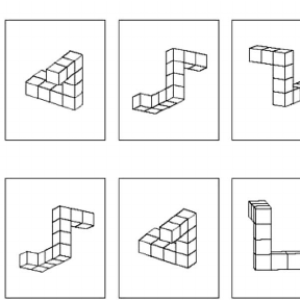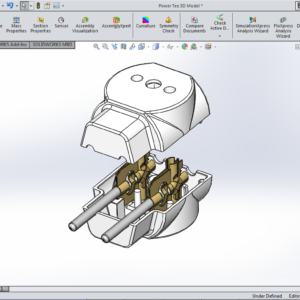
Introduction: Digital Twin in manufacturing optimization
In today’s fast-paced industrial world, efficiency and innovation are essential for staying competitive. One groundbreaking technology that is transforming manufacturing is the Digital Twin. By creating a virtual replica of physical systems, Digital Twins enable companies to simulate, analyze, and optimize their production processes in real time. This not only reduces costs and downtime but also enhances product quality and adaptability.
As industries face growing demands for sustainability and precision, the role of Digital Twin in manufacturing optimization has become more important than ever. This article explores how Digital Twins are revolutionizing manufacturing, offering practical steps and benefits for businesses ready to embrace this cutting-edge solution.
How Digital Twin is Transforming Manufacturing Optimization
A Digital Twin is a virtual model of a real-world object, system, or process. In manufacturing, it allows companies to create a digital copy of their production processes. This helps them test and improve these processes before making changes in the real world. By using Digital Twin in manufacturing optimization, businesses can save time, reduce costs, and improve product quality.
One key benefit of a Digital Twin is the ability to identify problems early. For example, it can simulate how a machine will perform under different conditions. If an issue is found in the simulation, engineers can fix it before it happens in real production. This reduces downtime and ensures smooth operations.
Another advantage is improving efficiency. A Digital Twin can analyze data from machines and provide insights into how to make them work faster or use less energy. These small improvements can lead to big savings over time.
With Digital Twin in manufacturing optimization, companies are also able to adapt to changes more easily. If market demands change or new technology becomes available, they can use the Digital Twin to plan updates without disrupting production.
Digital Twins are changing the way manufacturers work. They offer a smart way to test, improve, and adapt, helping businesses stay competitive in today’s fast-paced world.
Steps to Implement Digital Twin for Manufacturing Optimization
Implementing a Digital Twin in manufacturing optimization requires a clear plan and the right tools. Here are the key steps to successfully adopt this technology:
1. Define Your Goals: Start by identifying what you want to achieve with the Digital Twin. It could be reducing downtime, improving product quality, or increasing efficiency. Clear goals help guide the process.
2. Collect Data: A Digital Twin relies on accurate data. Gather real-time data from machines, sensors, and production processes to create a virtual model that reflects the real system.
3. Choose the Right Technology: Select software and tools that support Digital Twin creation and analysis. Many advanced platforms offer simulation, data analysis, and predictive modeling features.
4. Build the Digital Model: Use the collected data to create a virtual representation of your manufacturing process. This model should be detailed and able to mimic real-world conditions.
5. Test and Simulate: Run simulations using the Digital Twin to test different scenarios. Look for areas where improvements can be made and predict potential issues before they occur.
6. Apply Changes: Use the insights from your Digital Twin to optimize real-world processes. Make adjustments to improve efficiency, reduce costs, or enhance product quality.
7. Monitor and Update: A Digital Twin is most effective when it stays up-to-date. Continuously collect data and update the virtual model to reflect any changes in the real-world system.
By following these steps, companies can unlock the full potential of Digital Twin technology, making their manufacturing processes smarter and more efficient.

Digital Twin Technology: A Game-Changer for Manufacturing Optimization
Digital Twin technology is revolutionizing the way manufacturers approach manufacturing optimization. By creating a virtual replica of physical assets, processes, or systems, Digital Twins provide real-time insights and predictive analytics that transform traditional manufacturing practices. This technology acts as a bridge between the physical and digital worlds, enabling companies to optimize their operations in ways previously thought impossible.
Enhanced Monitoring and Control
One of the primary advantages of using a Digital Twin in manufacturing optimization is the ability to continuously monitor and control production processes. Sensors embedded in machinery collect data that is fed into the Digital Twin, allowing for real-time tracking of performance metrics such as temperature, pressure, and efficiency. This constant monitoring helps identify deviations from optimal conditions, enabling immediate corrective actions to prevent downtime and maintain consistent product quality.
Predictive Maintenance
Digital Twins play a crucial role in predictive maintenance, a strategy that anticipates equipment failures before they occur. By analyzing historical and real-time data, the Digital Twin can predict when a machine is likely to require maintenance. This proactive approach minimizes unexpected breakdowns, extends the lifespan of equipment, and reduces maintenance costs. As a result, manufacturers can achieve higher operational efficiency and reliability.
Optimizing Production Processes
With a Digital Twin in manufacturing optimization, companies can simulate different production scenarios to find the most efficient methods. By testing various configurations and workflows in the virtual environment, manufacturers can identify bottlenecks, streamline operations, and enhance overall productivity. This simulation capability allows for data-driven decision-making, ensuring that changes made in the real world lead to tangible improvements.
Improving Product Development
Digital Twins also enhance the product development lifecycle. By integrating design and manufacturing data, designers can use the Digital Twin to test and refine products before they are physically produced. This integration ensures that designs are not only innovative but also manufacturable and cost-effective. Additionally, feedback from the Digital Twin can inform iterative design improvements, leading to higher-quality products that meet market demands more effectively.
Sustainability and Resource Efficiency
Incorporating Digital Twin technology contributes to sustainability by optimizing resource usage and reducing waste. By accurately modeling production processes, manufacturers can identify areas where materials and energy are being wasted and implement strategies to use resources more efficiently. This not only lowers operational costs but also supports environmental sustainability goals by minimizing the carbon footprint of manufacturing activities.
Case Studies: Success Stories in Digital Twin Implementation
Many leading manufacturers have successfully integrated Digital Twin technology to optimize their operations. For example:
– Siemens uses Digital Twins to optimize the performance of their gas turbines, resulting in increased efficiency and reduced maintenance costs.
– General Electric (GE) employs Digital Twins in their aviation division to monitor and maintain aircraft engines, enhancing reliability and safety.
– Bosch leverages Digital Twins in their automotive manufacturing processes to streamline production and improve product quality.
These success stories highlight the transformative impact of Digital Twin technology on manufacturing optimization, demonstrating its potential to drive innovation, efficiency, and sustainability in the industry.
The Future of Manufacturing Optimization with Digital Twin Technology
The use of Digital Twin in manufacturing optimization is rapidly shaping the future of industrial processes. As industries embrace automation, artificial intelligence (AI), and the Internet of Things (IoT), Digital Twin technology has emerged as a vital tool for achieving smarter, more efficient manufacturing practices. Its potential to revolutionize the industry is enormous, making it a cornerstone for future advancements.
Integration with Emerging Technologies
The future of Digital Twin technology lies in its integration with AI, machine learning, and IoT. These technologies enable Digital Twins to not only simulate and analyze data but also learn from it. For instance, AI-powered Digital Twins can make predictions about machine performance or production efficiency with increasing accuracy, allowing manufacturers to stay ahead of potential challenges.
Expanding Scalability
As technology advances, Digital Twins are becoming more scalable, making it feasible for companies of all sizes to adopt them. Cloud computing and advanced data storage solutions now allow businesses to handle the massive data sets required for complex Digital Twin simulations. This scalability ensures that smaller manufacturers can also leverage this technology to optimize their processes.
Customized Manufacturing
The future of manufacturing optimization with Digital Twins also includes personalized production. Companies can use Digital Twins to design and test custom manufacturing processes tailored to specific product needs. This approach supports flexibility in production lines and helps businesses respond more effectively to market demands.
Sustainability Goals
Sustainability is a growing priority in the manufacturing industry, and Digital Twins will play a key role in achieving these goals. By optimizing resource use, minimizing waste, and reducing energy consumption, Digital Twin technology can help companies meet their environmental targets while maintaining profitability.
Global Collaboration
With the rise of connected systems, Digital Twins will enable seamless collaboration between global teams. Virtual models can be shared across continents, allowing engineers, designers, and managers to work together in real-time, improving decision-making and speeding up innovation cycles.
Challenges Ahead
While the potential of Digital Twins is vast, challenges remain. These include the high initial costs of implementation, the need for skilled personnel to manage and interpret data, and concerns about data security. Addressing these challenges will be critical to unlocking the full capabilities of this technology.
A Vision of the Future
The integration of Digital Twin in manufacturing optimization is not just a technological advancement; it is a transformation of how industries think about production, efficiency, and innovation. By bridging the gap between the digital and physical worlds, Digital Twins offer a vision of manufacturing that is smarter, more sustainable, and highly adaptive to change.
The future of manufacturing is digital, and Digital Twin technology is leading the way. Companies that embrace this innovation will not only optimize their operations but also set themselves apart in an increasingly competitive and eco-conscious market.
How Digital Twin Drives Efficiency and Innovation in Manufacturing Optimization
The implementation of Digital Twin in manufacturing optimization is reshaping the landscape of industrial operations, enabling companies to achieve unprecedented levels of efficiency and innovation. By providing a detailed virtual representation of physical systems, Digital Twins empower manufacturers to analyze, predict, and enhance their processes with precision.
Streamlining Operations for Maximum Efficiency
Digital Twins help manufacturers streamline their workflows by identifying inefficiencies and optimizing resource usage. For instance, they can simulate different production scenarios to determine the most cost-effective and energy-efficient approach. This minimizes waste and ensures that machinery and resources are used to their full potential.
Accelerating Product Development
Innovation thrives with Digital Twin technology. By enabling manufacturers to test new designs in a virtual environment, Digital Twins significantly reduce the time and cost associated with product development. Companies can identify potential issues early in the design phase, ensuring smoother transitions to production and higher-quality outcomes.
Enhancing Collaboration and Decision-Making
Digital Twins act as a central hub for data, providing all stakeholders with real-time insights into manufacturing processes. This fosters better collaboration across teams, as everyone can access and understand the same set of data. With clear and actionable insights, decision-making becomes faster and more informed, driving innovation and efficiency simultaneously.
Improving Flexibility and Adaptability
In a rapidly changing market, the ability to adapt is crucial. Digital Twins allow manufacturers to quickly adjust their operations in response to new demands or challenges. Whether it’s scaling production, introducing new product lines, or meeting sustainability goals, Digital Twins provide the flexibility needed to stay competitive.
Building a Foundation for Continuous Improvement
One of the most valuable aspects of Digital Twin in manufacturing optimization is its ability to support ongoing improvement. By continuously collecting and analyzing data, Digital Twins enable manufacturers to refine their processes over time. This iterative approach ensures that operations remain efficient and innovative long after the initial implementation.
Digital Twin technology is not just a tool for optimization—it’s a driving force for efficiency, innovation, and adaptability. As more companies integrate Digital Twins into their manufacturing strategies, the benefits will continue to grow, paving the way for smarter and more sustainable industrial practices.
Conclusion: Unlocking the Full Potential of Manufacturing with Digital Twin Technology
The integration of Digital Twin in manufacturing optimization is transforming the way industries approach production. By bridging the gap between physical processes and virtual simulations, Digital Twins provide powerful tools for improving efficiency, reducing costs, and fostering innovation. From predictive maintenance to streamlined operations, this technology empowers manufacturers to overcome challenges and adapt to a rapidly evolving market.
As Digital Twin technology continues to advance, its applications will expand, offering even more opportunities for growth and sustainability. Companies that embrace this innovation will not only optimize their current operations but also position themselves as leaders in the future of manufacturing.
The journey toward fully leveraging Digital Twins may come with challenges, such as implementation costs and the need for skilled expertise, but the long-term rewards far outweigh the initial hurdles. By adopting this technology, businesses can unlock new levels of productivity, flexibility, and competitiveness in an increasingly digital and eco-conscious world.










